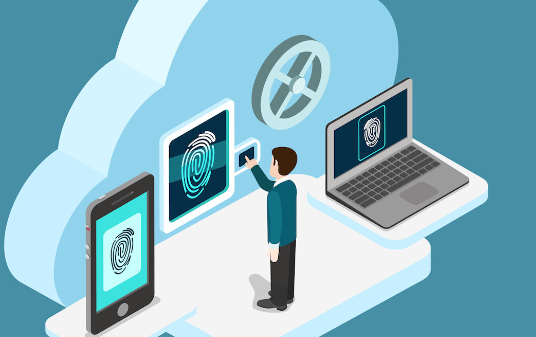
5 Advanced Authentication Methods for Business Websites
Companies today face constant threats from bad actors trying to access private data without approval. With passwords failing to withstand complex attacks, businesses are considering stronger authentication to harden cyber defenses. More secure identity and access controls using biometrics, one-time codes, device fingerprints and behavior tracking can verify users and block account takeovers, data theft and other exploits. As risks persist, organizations need to keep assessing and adopting advanced authentication to safeguard sensitive information, strategy, customer data and their reputation, while minimizing operational disruption. Several advanced authentication approaches can help businesses transcend conventional practices, delivering an elevated level of security for corporate website.
Biometric Authentication:
As biometric authentication utilizing unique physical and behavioral attributes becomes commonplace, it provides businesses a pathway to enhanced security and simplified user experience by eliminating the password burden. Deploying biometric mechanisms like fingerprint, iris scans, or facial recognition will help in safeguarding websites, accounts and sensitive data. It will also create an impervious barrier against unauthorized access. When considering advanced authentication methods for business websites, it’s essential to ensure that your godaddy web hosting provider also align with the chosen security measures to create a comprehensive and robust defense against cyber threats.
Multi-Factor Authentication:
Moving beyond sole reliance on passwords, Multi-Factor Authentication, also known as MFA, delivers resilient protection by requiring users to furnish multiple proofs of identity from – something they know like a password, something they possess like a token or mobile device, and biometrics. The layered authentication makes it exponentially harder to breach, even if one factor gets cracked. Customizable MFA allows businesses to tailor security to their environment and build formidable defenses against cyberattacks.
Behavioral Biometrics:
Elevating authentication, behavioral biometrics analyzes how users uniquely interact with devices based on typing rhythm, mouse movements or navigation patterns to construct distinctive user profiles that are exceedingly difficult to replicate or mimic. By continuously monitoring these behavioral cues such as precise mouse movements, millisecond differences in keyboard dynamics patterns, the exact pressure applied to tap and swipe gestures on mobile devices, and myriad other dynamics of human-device interactions, behavioral biometrics solutions create a distinctive fingerprint for each user. This makes it profoundly tricky for unauthorized actors to mimic natural and genuine user behavior down to such fine-grained details over sustained periods. This dynamic authentication approach, with its capabilities to detect anomalies from unique user profiles, adapts over time based on changing behavioral patterns, offering proactive and persistent security as threats evolve. It adds a powerful layer of identity corroboration that prevent bad actors attempting to commit new forms of fraud.
Token-Based Authentication:
Token-based authentication involves cryptographic tokens, whether hardware or software-based, to verify user identity. These tokens generate one-time passwords or codes synchronized with the authentication server. As these codes are time-sensitive and unique for each login session, intercepting them becomes futile for subsequent attempts. Token-based authentication adds an extra layer of security, especially in remote access scenarios, making it an effective choice for businesses aiming to enhance website security.
Risk-Based Authentication:
Risk-based authentication analyzes context such as location, access patterns, transaction details and other behavioral attributes before granting access in order to identify and block suspicious activities in real-time. By evaluating the context and risk profile associated with each authentication attempt, this context-aware analysis is able to secure accounts and privileges by only permitting trusted and authenticated activities. Advanced anti-fraud solutions even utilize artificial intelligence to actively screen behavior, instantly calculate highly accurate risk scores, and then allow or deny access accordingly.
Businesses must be vigilant against possible dangers in the ever changing field of cybersecurity. These sophisticated authentication techniques increases user confidence while also fortifying the security of corporate websites. When fortifying the security measures of business websites, companies such as navicosoft often prioritize advanced authentication methods to safeguard sensitive user data and protect against potential cyber threats. Embracing these innovative authentication techniques becomes imperative as technology progresses, enabling businesses to secure their digital assets and uphold a strong online environment. This proactive approach ensures businesses navigate the digital landscape resiliently, providing a trustworthy online experience for their users.



